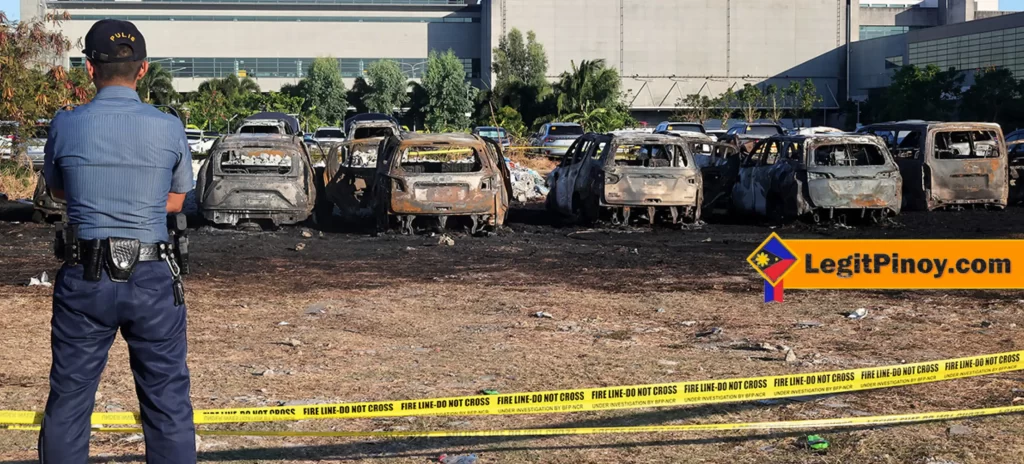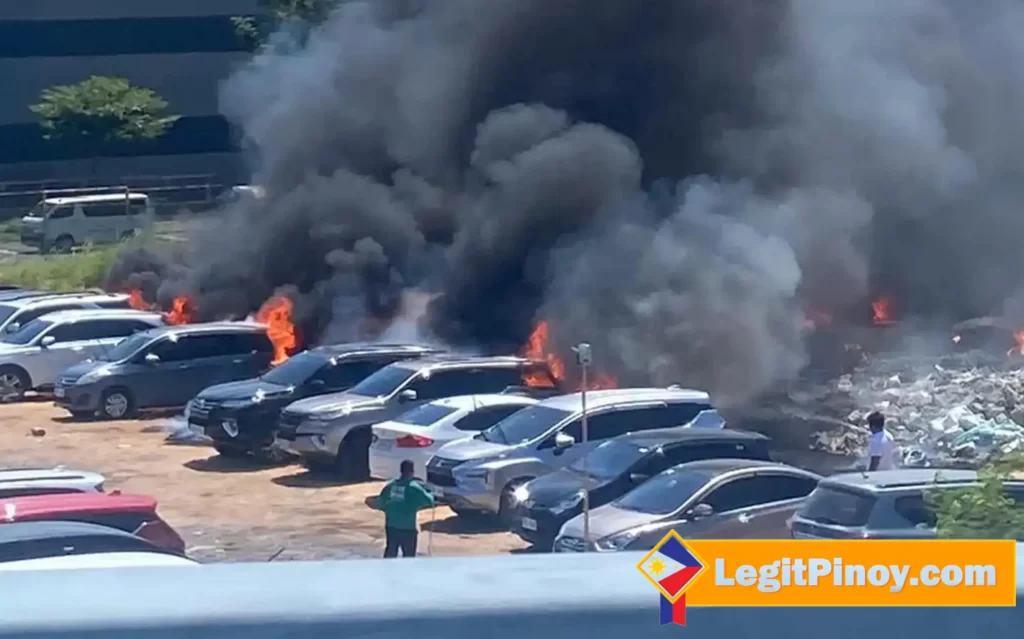NAIA TERMINAL 3 FIRE
What Happened and What You Need to Know

ADVERTISEMENT


WHEN WAS THE NAIA TERMINAL 3 OPENED
NAIA Terminal 3, also known as the Ninoy Aquino International Airport Terminal 3, was officially opened on July 22, 2008. It was inaugurated after several years of construction and delays, aiming to alleviate congestion at the other terminals of the Ninoy Aquino International Airport (NAIA) in Manila, Philippines.
Terminal 3 was designed to handle both domestic and international flights, with modern facilities and a capacity to accommodate around 13 million passengers annually. It was constructed by a consortium led by the Philippine International Air Terminals Co., Inc. (PIATCO).
However, Terminal 3 faced various legal and operational issues after its opening, including disputes over the concession agreement and concerns about its safety and structural integrity. These issues led to a period of limited operations and closures, affecting its full utilization for several years.
Despite the challenges, NAIA Terminal 3 has gradually increased its operational capacity and improved its facilities over the years, becoming one of the primary terminals for international flights at NAIA.
WHAT HAPPENED TO NAIA TERMINAL 3 FIRE?

The NAIA Terminal 3 Fire investigation raises concerns about airport safety. Learn about the incident, impacts, and measures taken for safety. Stay Informed .
The fire that engulfed cars in an outdoor pay parking area at the Ninoy Aquino International Airport (NAIA) may have been caused by a grassfire last April 21, 2024 Monday at around 1:30 pm and doused at 2:03 p.m., the Bureau of Fire Protection said. Exacerbated by the extremely hot weather, according to the airport’s management.
The incident occurred in the parking area of NAIA Terminal 3 Fire, and while the exact cause is still under investigation, initial reports suggest that the intense heat and dry conditions may have contributed to the fire’s rapid spread. Airport personnel, together with local fire departments, swiftly responded to the blaze and managed to contain it before it could cause further damage.
The management assured the public that safety measures are in place to prevent such incidents in the future and urged visitors to remain vigilant during this period of heightened fire risk.

19 VEHICLES DAMAGED AS FIRE HITS NAIA TERMINAL 3 FIRE PARKING LOT
On April 21, 2024, a fire broke out in the parking lot of Ninoy Aquino International Airport Terminal 3 Fire (NAIA-3), damaging 19 vehicles. The fire reportedly started in a car parked on the second level of the parking facility. Airport personnel and fire trucks responded swiftly to contain the blaze, which was brought under control after several hours.
The affected vehicles sustained varying degrees of damage, with some completely engulfed in flames. Fortunately, there were no reported injuries among passengers or airport staff. The cause of the fire is still under investigation, although initial reports suggest it may have been due to a mechanical or electrical fault in one of the vehicles.
The incident caused temporary disruptions at NAIA Terminal 3 Fire, with some flights experiencing delays as a result of the emergency response. Airport authorities are working to minimize further disruptions and ensure the safety and security of all passengers and personnel.
WHO IS LIABLE AT FIRE HITS NAIA TERMINAL 3 FIRE PARKING LOT?
In the event of a fire at the NAIA Terminal 3 Fire (NAIA-3) parking lot, liability could potentially fall on different parties depending on the circumstances and the cause of the fire. Here are some key considerations:
- Owner/Operator Liability: The owner or operator of the parking lot could be held liable if the fire was caused by their negligence. For example, if the fire started due to faulty electrical wiring that the owner failed to maintain or repair, they could be held responsible.
- Vehicle Owner Liability: If the fire originated from a vehicle parked in the lot, the owner of that vehicle could be liable if it can be proven that the fire was caused by a defect in the vehicle or its maintenance.
- Third-Party Liability: Liability could also fall on a third party if it can be shown that their actions or negligence contributed to the fire. For example, if the fire was caused by a contractor performing work in the parking lot, the contractor could be held responsible.
- Government Liability: If the fire was caused by a failure in the airport’s infrastructure or safety systems, the government agency responsible for the airport’s maintenance and operation could be held liable.
Determining liability in such cases can be complex and often requires a thorough investigation to establish the cause of the fire and the party or parties responsible. Legal advice should be sought to understand the specific circumstances and potential liabilities involved.
ADVERTISEMENT

NAIA TERMINAL 3 FIRE CARKPARK OPERATOR HAS REACHED OUT REGARDING ITS LIABILITY FOR FIRE DAMAGE TO 19 CARS.
The NAIA Terminal 3 Fire car park operator has been contacted regarding liability for fire damage to 19 vehicles. The incident occurred on the night of April 21, 2024, when a fire broke out in the car park, causing extensive damage to the vehicles. The operator is now facing questions about its responsibility for the damage and how it plans to compensate the affected vehicle owners.
The car park operator of NAIA Terminal 3 Fire is expected to conduct a thorough investigation into the cause of the fire to determine if there was any negligence on their part. They will also need to review their insurance coverage to assess if it will cover the cost of repairs or replacement for the damaged vehicles. Additionally, the operator will need to communicate with the affected vehicle owners to provide updates on the situation and advise them on the next steps.
In terms of liability, NAIA Terminal 3 Fire operator’s responsibility will depend on the findings of the investigation. If it is determined that the fire was caused by factors within their control, such as faulty electrical wiring or inadequate fire safety measures, they may be held liable for the damage. However, if the fire was caused by factors outside of their control, such as arson or a natural disaster, their liability may be limited.
Overall, the car park operator will need to handle the situation with transparency and empathy towards the affected vehicle owners. They should provide regular updates and ensure that the affected parties are kept informed throughout the process of assessing and addressing the damage.
NAIA TERMINAL 3 FIRE WILL UNDERGO A SERIES OF POWER MAINTENANCE
NAIA Terminal 3 Fire will undergo a series of power maintenance activities from April 2 to May 28. These activities are necessary to ensure the continuous and reliable operation of the airport’s electrical systems. During this period, there may be temporary disruptions to power supply in certain areas of the terminal.
Passengers are advised to check with their airlines for any potential impact on their flights and to allow for additional travel time to the airport. NAIA Terminal 3 Fire authorities are working to minimize inconvenience and ensure that operations remain smooth during the maintenance period.
PEOPLE ALSO ASKED
When was NAIA Terminal 3 opened?
Terminal 3, the newest and largest terminal, covers 182,500 square meters (1,964,000 sq ft) and extends 1.2 kilometers (0.75 mi), occupying a 63.5-hectare (157-acre) site on Villamor Air Base. The terminal partially opened on July 22, 2008, increasing the airport’s capacity by 13 million passengers.
Who built NAIA terminal 3?
Takenaka was the original contractor commissioned by Philippine International Air Terminals Co. (Piatco) to build NAIA 3 in 1998.
Can anyone enter NAIA terminal 3?
MAIN DEPARTURES HALL (Level 3) The fringes of the check-in lobby can be accessed by the general public, but the central area – where the airline counters themselves are located – is for passengers only. You’ll be asked to present your travel documents before being allowed into that part of the main hall.
When was the NAIA Terminal 3 Fire today?
The Manila International Airport Authority (MIAA) first received a report about a fire in the area at 1:28 pm on Monday. Five firetrucks were immediately deployed, and the fire was placed under control by 1:40 pm. The Bureau of Fire Protection is currently investigating the cause of the fire.
What caused the NAIA Terminal 3 Fire?
The fire that burned cars in an outdoor pay parking area at the Ninoy Aquino International Airport (NAIA) may have been caused by a grassfire due to the extremely hot weather, the airport’s management said.
What causes in flight fires?
Without aggressive intervention by the flight crew, a fire on board an aircraft can lead to the catastrophic loss of that aircraft within a very short space of time. Once a fire has become established, it is unlikely that the crew will be able to extinguish it.
Which airline has never had a plane crash?
Hawaiian has been flying planes since 1929 and never once had a fatal accident, making it, if our stats stand up, the longest functioning carrier to have never lost a passenger. It may have suffered two bankruptcies (1993 and 2003) but it has not compromised on safety.
What plane burned in 2024?
JAL516 was a scheduled domestic passenger flight from New Chitose Airport near Sapporo, Japan, to Haneda Airport in Tokyo, and the Coast Guard plane was on a relief mission in response to the 2024 Noto earthquake which had occurred the day before. The collision ignited fires that destroyed both aircraft.
Who designed terminal 3?
Celebrated architect Rohani Baharin designed the terminal. Her other works include Changi International Airport’s Terminal 3, Wuhan Tianhe Terminal 2, Guanghzhou Baiyun New International Airport, Ahmedabad International Airport, New Islamabad International Airport, Can Tho and Phu Quoc International Airports.
Who is the new owner of NAIA airport?
The Philippine government awarded the 170.6 billion ($3 billion) contract to upgrade and operate the aging Ninoy Aquino International Airport (NAIA), the country’s main international gateway, to a consortium led by billionaire Ramon Ang’s San Miguel, transport secretary Jaime Bautista announced Friday.
CONCLUSION
NAIA Terminal 3 Fire incident was a tragic event that resulted in significant damage and disruption. Investigations into the cause of the fire revealed lapses in safety protocols and emergency response, highlighting the need for stricter enforcement of safety measures in public facilities.
It is crucial for airport authorities to implement comprehensive fire prevention and emergency preparedness measures to ensure the safety of passengers and staff of NAIA Terminal 3 Fire. Regular inspections, maintenance of fire detection and suppression systems, as well as continuous training for airport personnel, are essential to prevent similar incidents in the future.
The incident serves as a reminder of the importance of prioritizing safety and security in all public spaces. Adequate measures must be in place to protect lives and property, and lessons learned from this incident should be used to improve safety standards across all airports and public facilities in the country.
YOU MAY ALSO LIKED :
Also recommended :
- Majesty33
- ok777 win
- jili22
- Lucky777 Casino
- ME777
- luckyjackpot888
- Lovejili
- Jilipark
- Okada988
- phtaya
- Crown89
- Bounty11
- Wine Casino
- Falcon Play
- Queen777
- crazy-jackpot
- party-casino
- 888 Casino
- Rich Queen

Bea Kristine, she’s a passionate writer with a keen interest in online casinos and gaming. She strives to create compelling and informative content for readers interested in the online gaming industry. Her goal is to provide valuable insights and engaging stories that resonate with her audience, helping them make informed decisions and enhance their gaming experience.
